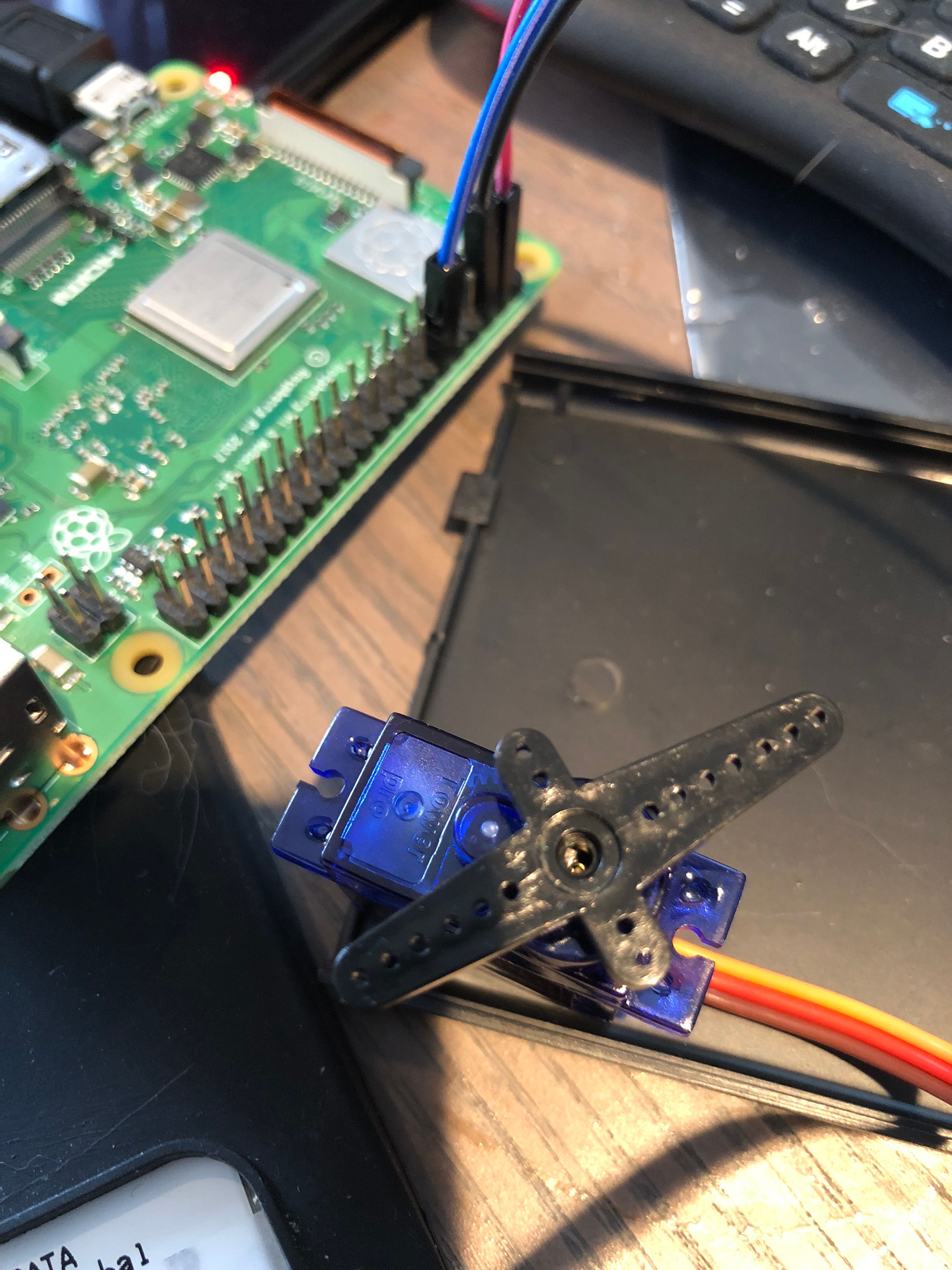Jitter-Free Servo Control on the Raspberry Pi
python·@makerhacks·
0.000 HBDJitter-Free Servo Control on the Raspberry Pi

Previously we looked at [motor control](https://steemit.com/programming/@makerhacks/raspberry-pi-robots-with-python) but for our robot there is another type of *actuator* that we need to drive, and those are ***Servos***.
### Servos
Servos are another kind of motor, but they are actually easier to use than regular motors with the Pi, because they have built-in controllers. There is one problem, however, which we will get to in a moment.
We can choose between the regular kind of servo, where the servo can be told to move to a position or angle, and then there are the continuous kind where instead of angle, the same instruction controls speed and direction.
### Problem?
Rather than tell you about it, let me show you :)
Wire up a servo with the power connected to 5v, the ground connected to a GND, and the signal connected to Pin 18.
We will be using the chips pin numbers so refer to the Pinout.xyz guide here:
https://pinout.xyz/resources/raspberry-pi-pinout.png
```
from gpiozero import AngularServo
from time import sleep
servo = AngularServo(18, min_angle=-42, max_angle=44)
while True:
servo.min()
sleep(1)
servo.mid()
sleep(1)
servo.max()
sleep(1)
servo.angle = 40
sleep(1)
servo.angle = 20
sleep(1)
servo.angle = 0
sleep(1)
servo.angle = -20
sleep(1)
servo.angle = -40
```
This code will *work* but ill likely find the motion is stuttery. This is because of the Raspberry Pi being a fully-fledged computer rather than a microcontroller. Instead of just doing one thing at a time, the Pi has a multi-tasking operating system that has to do many things all at once.
https://youtu.be/bGiFAjs9IMQ
### Raspberry Pi Jitter Solution
Fortunately for us, a [generous soul from the UK has ported a low-level library](http://abyz.me.uk/rpi/pigpio/index.html) for us to use.
```sudo pip3 pigpio```
and run ```sudo pigpiod```
Add the following code then check out the difference:
```
import pigpio
from time import sleep
# connect to the
pi = pigpio.pi()
# loop forever
while True:
pi.set_servo_pulsewidth(18, 0) # off
sleep(1)
pi.set_servo_pulsewidth(18, 1000) # position anti-clockwise
sleep(1)
pi.set_servo_pulsewidth(18, 1500) # middle
sleep(1)
pi.set_servo_pulsewidth(18, 2000) # position clockwise
sleep(1)
```
Much more stable, right?
### What now?
As we have seen, other than the power limitations, the Pi can be a capable ***physical computing*** device, but for anything more in-depth I like to split the responsibilities of hardware control versus processing.
#### Check out my article where I [combine the Raspberry Pi *and* Arduino](https://steemit.com/arduino/@makerhacks/runningraspberrypiandarduinoforthebestofbothworlds-2t2sectslz).👍 makerhacks, share4every1, taukproung85, tpvoter1, hardikv, dshelton32, tony10, yairdd, sayee, olegnator, fullofhope, fronttowardenemy, spirits4you, themanualbot, passive, yesil, distantsignal, moar007, santana33, sarasate, ilyastarar, football-365, docsweettooth, leongkhan, rtdcs, robertking, cryptomaker, zapper, neebootoo, zoef, aafrin, fingersik, billbutler, raycoms, zoelviana, synergysteem, blockops, ew-and-patterns, indurkin, pusteblume, la4life, r2cornell, bycz, mylolmania, steemdrive, dercoco, masonmiler, epicdesigns, gohba.handcrafts, gyanibilli, tradealert, wdougwatson, moneymatchgaming, pointeblue, steemitbc, magic-sasquatch, thegoldenphoenix, bunnypunia, tagsplanet, natepowell, sniffbiff, uxair, karinxxl, faces, sobaru, fakhre2001, steemwildboy, rampagejr, dbwitty, onyemacourage, worldiz, aandebickel, ernick, smilewithme, sbi3, midnas-howler, yuriks2000, mexresorts, greyman, valderrama, gunthertopp, johnyliltoe, masummim50, allizz, cloudspyder, rabiul23, ran-a-banana, thelifeofjord, bapin, klizo, zomagic, andreea290, curitek, eathekaos, dirapa, roberta92, weimunyap, motochan, nataliechickee, malekalmsaddi, rawpride, themarkymark, devil0002, devil0003, topu121, devil0001, upmyvote, ipromote, buildawhale, technology-trail, momoriso, postpromoter, upme, mytechtrail, techtek, steemmakers, pbock, jefpatat, podanrj, drmake, flash4yard, electricswine, salvadorcrg, dmxmaster, boucaron, nunik, elitewarrior, bipedalmeme,